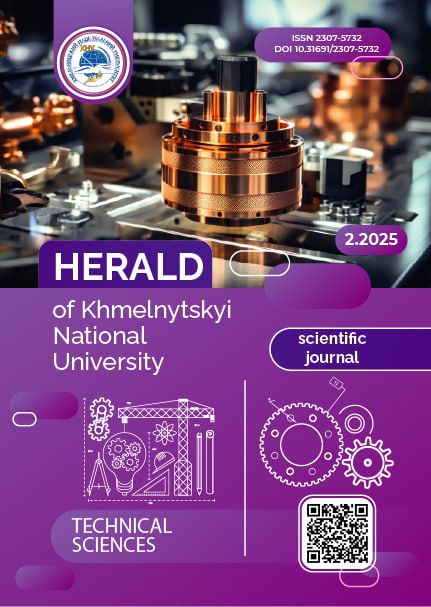DETERMINATION OF THE EFFICIENCY OF THE REAGENT FOR THE STABILIZATION TREATMENT OF WATER AND ITS EFFECT ON BIOFOULING
DOI:
https://doi.org/10.31891/2307-5732-2025-349-17Keywords:
water stabilization treatment, stabilization effect, antiscale effect, bacteriological contamination, biofoulingAbstract
In the context of increasing energy demands and the need for rational use of resources, the efficiency of heat supply systems is critical to ensuring energy security of the regions. Currently, there is insufficient scientific research on the effect of antiscalants on biofouling in real operating conditions of heat supply systems, especially regarding the long-term impact and efficiency of existing biofouling control agents. Thus, the study of biofouling when using antiscalants in heat supply systems is an important step towards increasing efficiency, reducing operating costs and minimizing the environmental impact of these systems. It has been established that when using RT-2024-3, biofouling of glass plates occurs intensively, the total microbial count increases by 2.8 times compared to the control. The relevance is also associated with the need to create new, more effective and environmentally friendly antiscalants. The use of antiscalants is an important element for maintaining the efficiency and duration of water treatment systems. They are used to reduce the formation of limescale and other deposits that can damage equipment and reduce its performance. Deposits such as scale, limescale or rust can cause problems with system operation, reduce heat transfer, foul surfaces and increase energy consumption and maintenance costs.The article presents the results of studies of water stabilization treatment using the RT-2024-3 antiscalant in tap water in Kyiv with a hardness of 4.30 mg-eq/dm3. It was found that the effectiveness of the tested antiscalant increases with increasing dose from 2.5 to 50.0 mg/dm3. In the case of using the antiscalant, the stabilization effect reached 81-85% at an inhibitor concentration of 30-50 mg/dm3, while the antiscale effect was at the level of 94-99% in the entire range of reagent concentrations used.
Downloads
Published
Issue
Section
License
Copyright (c) 2025 МАРИНА ГРОМНАДСЬКА, ІННА ТРУС, АРСЕНІЙ ТАРАНЕНКО (Автор)

This work is licensed under a Creative Commons Attribution 4.0 International License.

